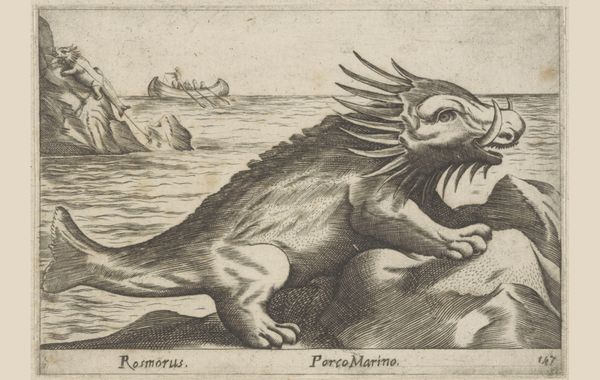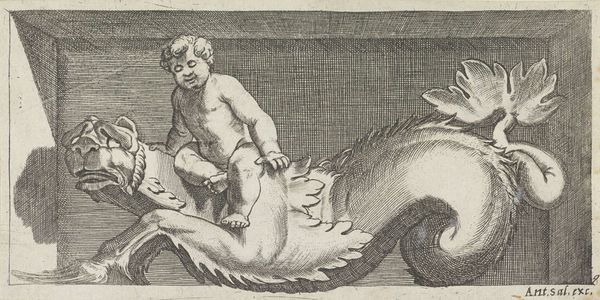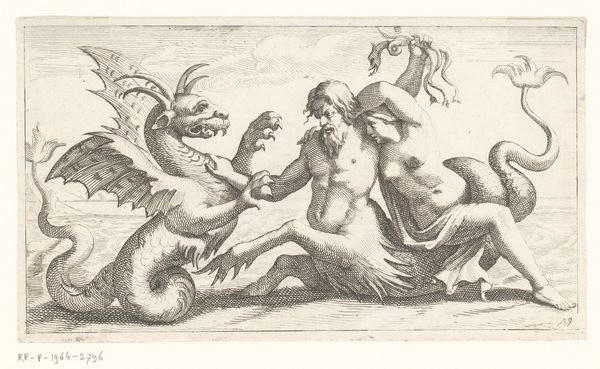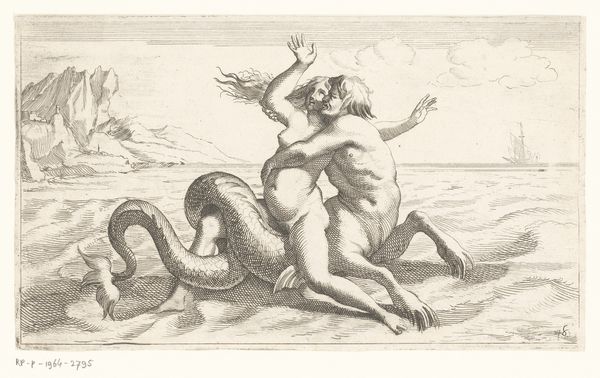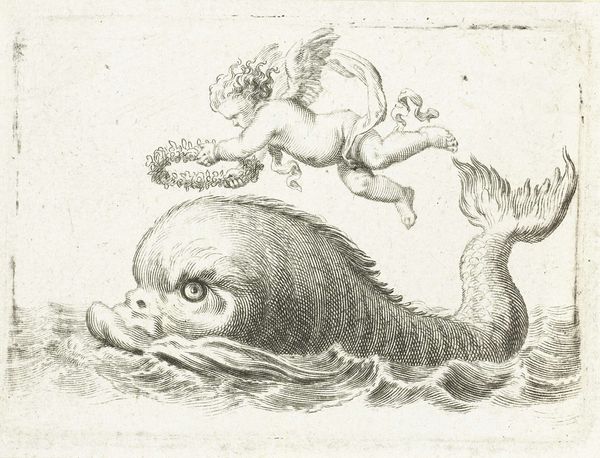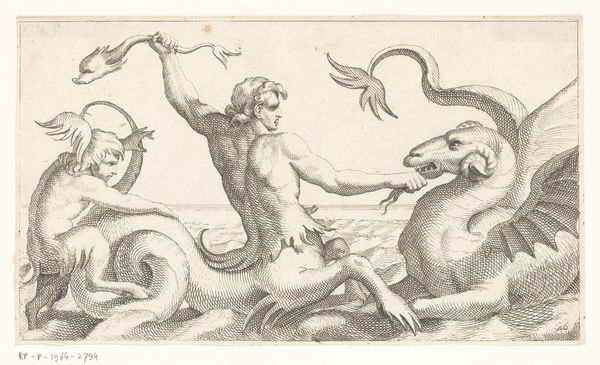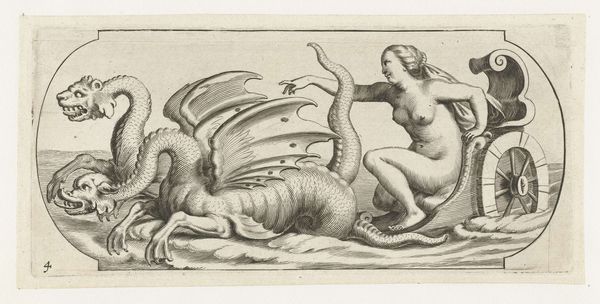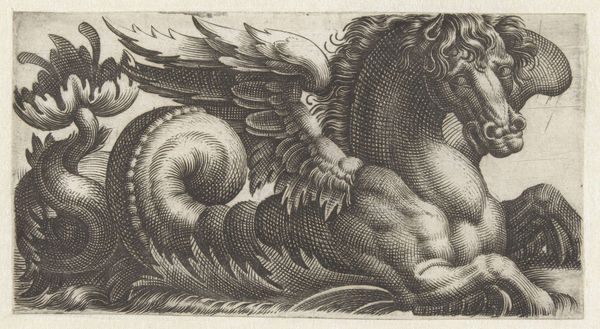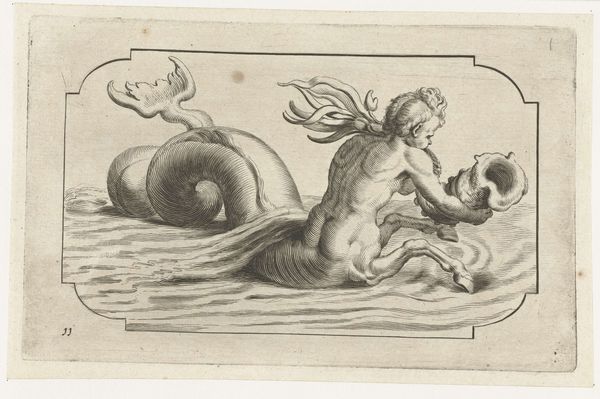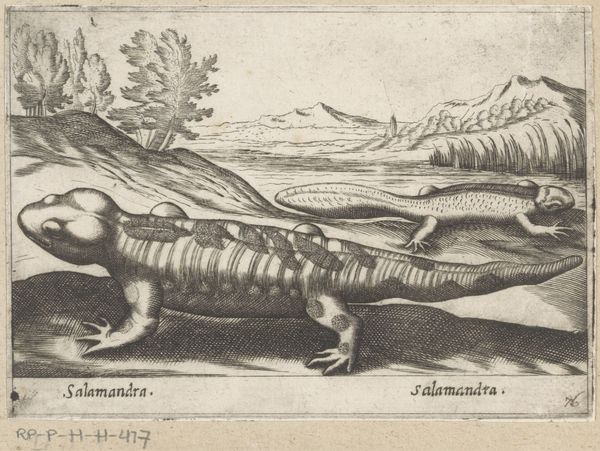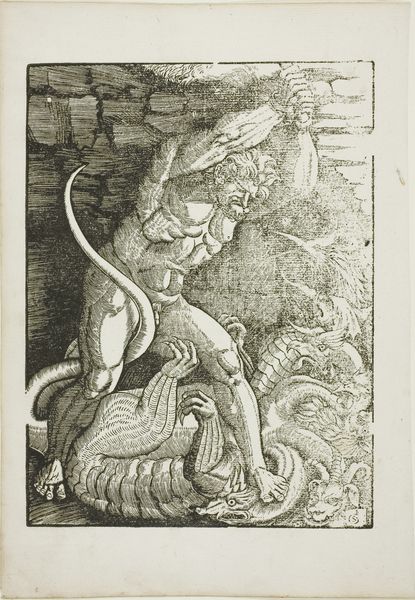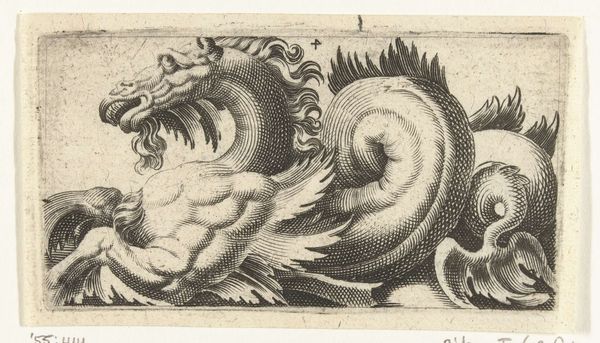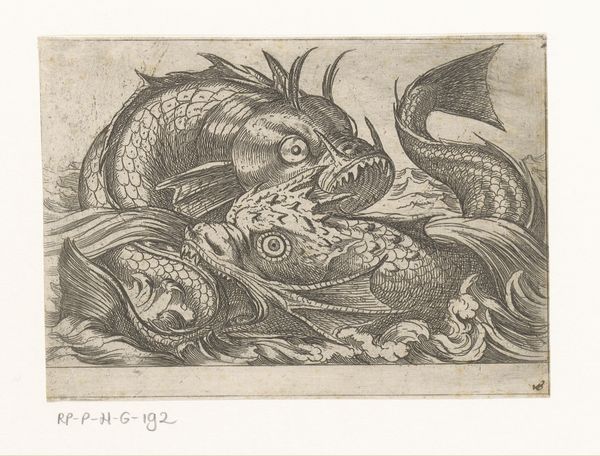
print, engraving
#
allegory
#
narrative-art
#
baroque
# print
#
greek-and-roman-art
#
fantasy-art
#
figuration
#
engraving
Dimensions: height 95 mm, width 137 mm
Copyright: Rijks Museum: Open Domain
Curator: Right now, we're looking at a baroque engraving titled "Zeesater," dating to before 1650. Antonio Tempesta is credited with its creation, and the Rijksmuseum is its home. The medium is listed as a print. Visually, what strikes you most? Editor: I must admit, my immediate reaction is a startled amusement! The creature, a 'Satirus marinus' as labelled, is utterly bizarre! Part fish, part goat, part… well, the human torso adds a disturbing layer. The overall effect is captivatingly grotesque. Curator: Grotesque indeed, but think about the symbols layered here. The goat-like features speak to Pan and Dionysian revelry, linking it to earthly desires and untamed nature. Merged with the fish tail, we have a powerful image of duality, maybe a psychological confrontation with our submerged primal selves. Editor: That is precisely where it connects for me; these “sea satyrs,” as they’re known, emerge in a time when Western society is brutally colonizing different regions. This engraving and the grotesque creature it portrays is a meditation on the colonial idea of monsters living in unexplored regions of the world. Curator: That reading situates the figure very strongly within socio-historical discourses. And how does it build upon prior imagery? You may know, satyrs are old figures in mythology. And the 'marinus' aspect suggests maritime power and exploration of that moment. I think of ancient Roman mosaics with sea creatures depicted and I see how Tempesta both adopts and transforms it. Editor: Right, this is about Western identity, the boundaries between human, animal, divine. Think about power structures reinforced through depictions of otherness; who defines what is monstrous or natural? Tempesta isn't just creating an oddity; the print critiques cultural narratives, possibly offering a perspective from the margins. Curator: These narratives are, by nature, fluid. They have always transformed to mean new things across generations. Editor: True. I now see how loaded this so-called simple engraving truly is, brimming with layers of colonial guilt, gender and sexuality and, more specifically, societal critique and cultural questioning. Curator: Yes, seeing this in connection with social conditions lets one more vividly interpret cultural and psychological projections present. A remarkable print by Tempesta to ruminate about through time.
Comments
No comments
Be the first to comment and join the conversation on the ultimate creative platform.
